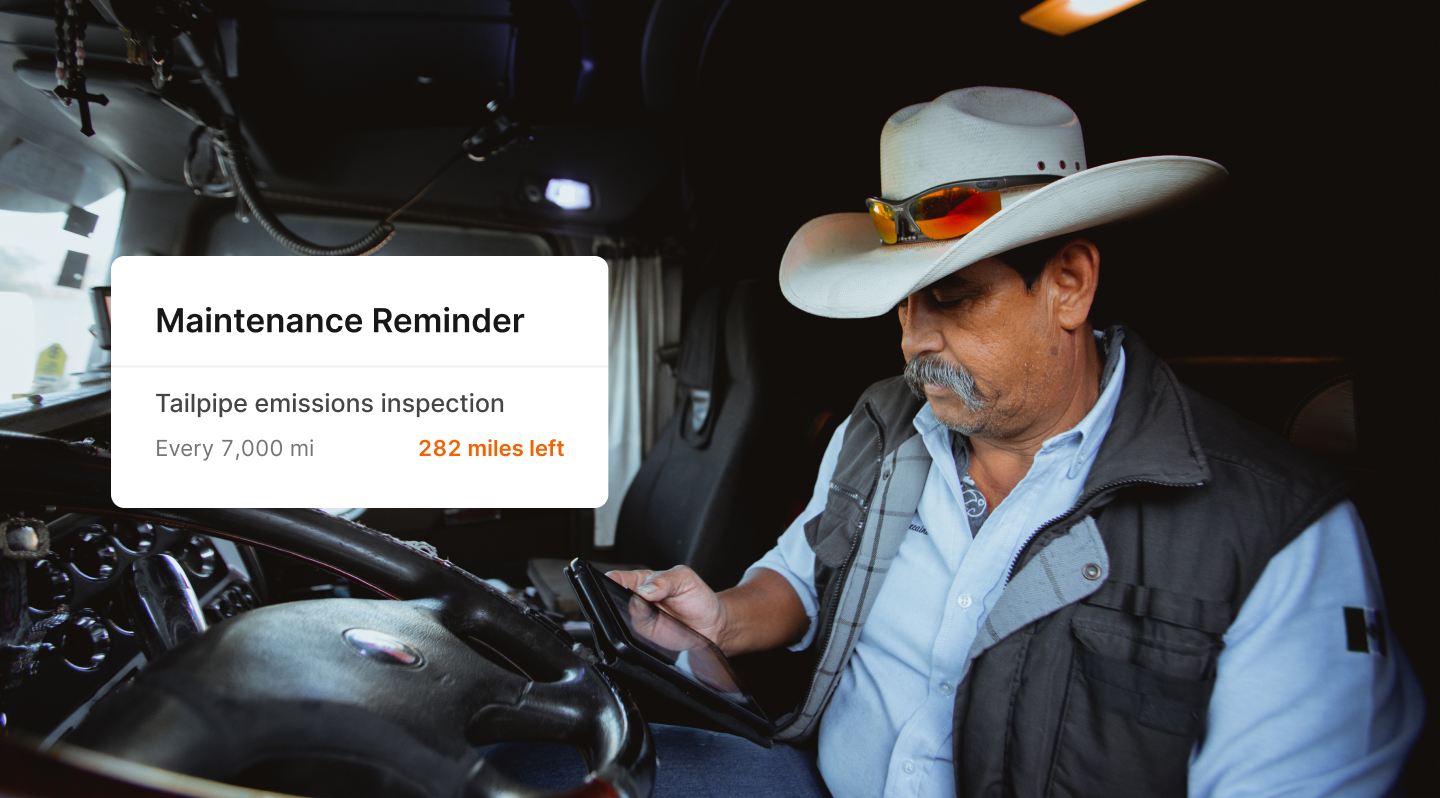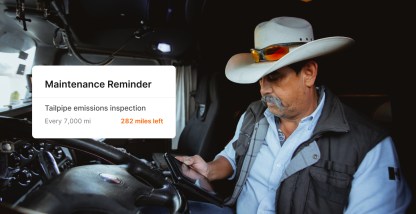For decades, California has been associated with smog so thick it can obscure skyscrapers or the Golden Gate Bridge. In 2022, California counties took the top six spots on a listing of America’s “Most Polluted Places to Live.” California’s smog check rules are just one of the ways the state is working to combat air pollution.
What is a smog test?
A smog test is an inspection of vehicle emissions required for registering vehicles and renewing vehicle registrations. The test needs to be performed at a licensed facility. Results will be reported to your state’s department of motor vehicles.
Smog tests are not specific to California. More than 30 states in the United States require emissions testing. Fleet vehicles that are traveling nationally will want to check the Environmental Protection Agency (EPA) rules for testing in different states.
Still, the focus of this article is California. With 15 of its counties making the American Lung Association’s Top 25 “Most Polluted Places to Live,” the Golden State requires smog checks to help improve air quality.
According to the state’s Bureau of Automotive Repair (BAR), “approximately 400 tons of these smog-forming emissions are removed from California’s air each day” due to the smog check program.
What happens during a smog check?
A California smog check is designed to make sure vehicles are not emitting types of pollutants that are banned or more pollutants than allowed under EPA standards. There are several components to a smog check, though not all vehicles are subject to all parts of the test.
Visual inspection
In the visual inspection, the smog inspector will confirm that all the emissions equipment is properly connected. They’ll also do a visual smoke check for excessive black smoke if you’re driving a diesel vehicle under 14,500 GVW.
Functional inspection
This part of the process checks the vehicle’s ignition timing, exhaust gas recirculation system, fuel evaporative system, and gas cap.
On-Board Diagnostic (OBD) system inspection
The inspector will verify data from your internal emissions diagnostics system and ensure that your Malfunction Indicator Light (MIL), what we think of as the “check engine” light, is working properly. Any errors on your OBD could make your vehicle fail.
Tailpipe emissions inspection
In this part of the test, the level of pollutants emitted is measured. The volume and type of pollutants (e.g., hydrocarbons, carbon monoxides, and nitrides of oxygen oxides) are tested against EPA standards.
Which vehicles are required to have a California smog certificate?
The regulation mainly covers all cars and light-duty trucks. California requires gasoline-powered vehicles, model-year 1976 and newer, to have a smog certificate. Still, there are some exceptions. Starting January 1, 2019, California allowed drivers to pay a smog abatement fee on vehicles less than four model years old, instead of getting a smog inspection for the first 8 years that your vehicle is registered.
Vehicle owners receive a certification of compliance after the vehicle passes the smog check tests. At the completion of the tests they get both a Vehicle Inspection Report (VIR) and the smog certificate.
How much does a smog check cost?
Smog check price varies depending on type of vehicle tested, type of smog check required, and location. California’s BAR doesn’t regulate smog test prices. Yet, the typical smog check cost is between $30 and $60.
The BAR recommends calling around to compare smog test costs at local stations near you. Of course, if the vehicle needs repairs to pass the smog test, that will cost you more.
Which vehicles in California are smog-check exempt?
A fleet vehicle would be exempt if:
- The vehicle is gas-powered and less than eight model-years old
- It is a 1997 or older model year diesel-powered vehicle
- The vehicle is diesel- or natural gas-powered and has a gross vehicle weight of more than 14,000 pounds
- The vehicle is electric
That said, heavy duty fleet vehicles are now also subject to emissions checks. Just not in the same way as cars and light duty vehicles.
In 2019, California moved to bolster its emissions checks with a Heavy-Duty Vehicle Inspections and Maintenance Program. The program, taking effect this year, uses onboard diagnostics (OBD) system data to measure emissions control in heavy-duty trucks and buses. Vehicles registered both in- and out-of-state are subject to the twice-a-year inspections, no matter the fleet size. Owner-vehicle reporting begins mid-2023. Periodic compliance testing is due to begin in 2024. There is also an accompanying $30 annual fee, even for out-of-state heavy duty fleet vehicles.
How often is a smog check required in California?
Expect to do a smog check every two years as part of your car or light-duty vehicle registration process. The registration renewal notice you get from the state’s Department of Motor Vehicles (DMV) will tell you if a smog check is required.
If the fleet vehicle is changing hands, or you’re registering it for the first time in California, you’ll also need to get a smog check.
What happens if a fleet vehicle fails a California smog check?
If a vehicle fails its smog check, you need to take it to a licensed Test-and-Repair station or a Repair-Only station. The results of your smog check will be recorded within one business day. So, you can schedule a follow-up appointment as early as the next day after your failed test.
To schedule a vehicle smog check results review, you will need to provide:
- License plate number and/or vehicle identification number (VIN)
- Reason(s) you are seeking a Smog Check Referee inspection
- Vehicle Inspection Report from your most recent smog check
Once you complete the vehicle repairs, you’ll retest. That station will electronically send your smog certification to the DMV when the vehicle passes.
Why do vehicles fail smog inspections?
There are a number of common reasons your vehicle can fail its smog check. These include:
- Excessive tailpipe emissions
- Modifications done with non-approved parts or computer programing
- Failures of the check engine light or OBD monitor
- Faulty sensors or computer controls
Bureau of Automotive Repair (BAR) referees can help locate hard-to-find emissions parts and assist with unusual inspections. To learn more, visit www.bar.ca.gov.
Where to get smog tests in California
Smog tests need to be done at an authorized station. The majority of cars and light-duty vehicles are tested at STAR stations, which are monitored by the BAR. There are also Test-Only stations. These specialize in smog inspections, but cannot do diagnostics or repair. If your vehicle fails to pass at a Test-Only station, you will then need to go to a Test-and-Repair station or a Repair-Only station.
You can find a DMV-authorized smog check station near you or visit smogcheck.ca.gov.
How to prepare for a California smog check
Taking good care of your vehicle maintenance can help improve your chances of passing a smog check and complying with Heavy Duty inspections. The vehicle’s owner’s manual will help you know what to address and when, but here are some of the regular maintenance actions that can make a difference.
Change the oil
Low levels of oil or contaminated oil can cause smog check failures. If you’re near due for an oil change before your smog check, go ahead and make the change beforehand.
Check the engine
If the check engine light comes on, don’t disregard it. The light should be off when you go for a smog check. If it’s on during the smog check, that’s an automatic fail.
Ensure your OBD is functioning properly
With the new rule requiring biannual reporting of OBD data from heavy-duty commercial vehicles, your fleet can’t risk sensor failures. Making sure your vehicle is fully tuned up can help avoid any issues that will give the inspector reason to fail you.
Pay attention to onboard lights
Any blinking or flashing light in your vehicle signals there is a problem. To avoid serious damage to your fleet vehicle, and risk smog check failure, get that warning light checked. Fleet Owner cited a California report finding in field tests, “11% to 17% of heavy-duty trucks with onboard diagnostics showed malfunctioning indicator lights, meaning their emissions controls might be faulty.”
You’ll also want to avoid tampering with any of the vehicle’s emissions-control equipment. That’s a common reason vehicles fail.
One handy way to stay on top of the maintenance requirements for all your fleet vehicles? Take advantage of telematics data integrations to support a preventive maintenance approach. With automated maintenance reminders and reports on each individual vehicle, specific to its vehicle health data, you can ensure your fleet vehicles are always ready for their smog check.
Preventive maintenance – it’s about more than smog checks
This article has focused on California smog checks. They have helped the state improve its air quality, and that’s a great thing. Still, keeping your fleet well-maintained is not just about compliance. A fleet maintenance solution helps with preventive maintenance but can also help you maximize productivity and optimize costs.
Integrating telematics and vehicle health reporting can make it easier to maintain and access records. This can simplify inspection and compliance reporting, which can be a real time-saver for fleet and safety managers as well as drivers.
Leveraging diagnostic and maintenance data your fleet can also move from reactive maintenance to predictive maintenance. Reduce expenses and avoid fleet downtime by anticipating maintenance and catching defects before they become larger and more expensive issues.
Get started today with Motive’s fleet maintenance solution. Contact a sales rep for more information.









